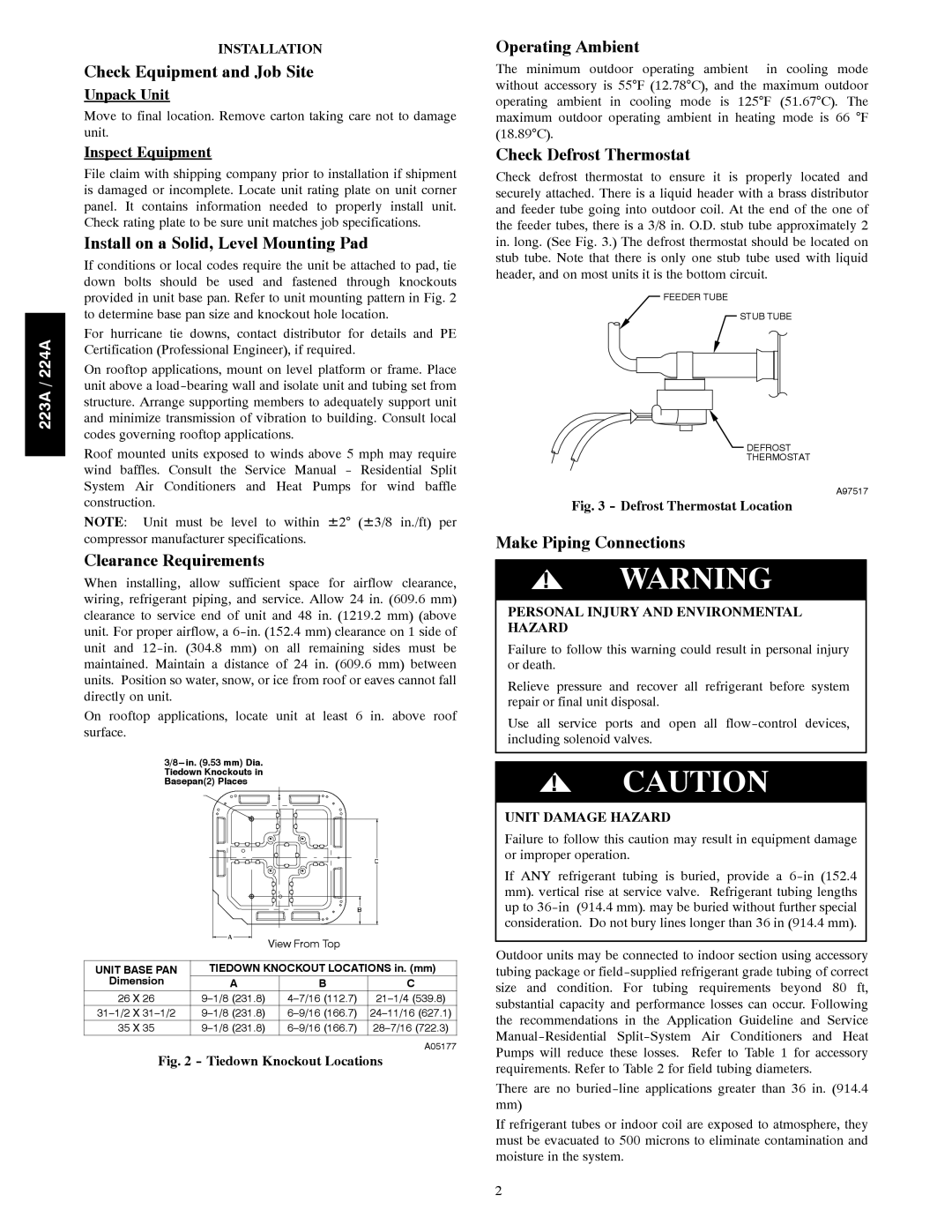224A, 223A specifications
The Bryant 223A is a cutting-edge air conditioning unit that epitomizes modern cooling technology. Designed for both residential and commercial applications, this model stands out for its efficiency, reliability, and user-friendly features. One of the most significant aspects of the Bryant 223A is its energy efficiency, boasting a Seasonal Energy Efficiency Ratio (SEER) rating of up to 16. This high rating means lower energy consumption, translating into reduced utility bills for homeowners and businesses alike.One prominent feature of the Bryant 223A is its environmentally friendly design. It utilizes Puron refrigerant, which has zero ozone-depleting potential, making it a responsible choice for those looking to minimize their environmental footprint. In addition to being eco-conscious, the unit is equipped with a variable-speed compressor, allowing for improved humidity control and enhanced comfort levels. This technology enables the system to adjust its cooling output based on the current indoor conditions, resulting in more consistent temperatures and quieter operation.
Another noteworthy characteristic of the Bryant 223A is its robust construction. The cabinet is designed with galvanized steel, offering durability and resistance to corrosion. This resilience ensures that the unit can withstand the rigors of various weather conditions, contributing to its longevity. Moreover, the unit features an innovative design that minimizes noise levels, ensuring that it operates quietly without disturbing daily activities.
Ease of installation is yet another advantage of the Bryant 223A. The unit comes with a compact design, allowing for straightforward placement in a variety of settings. Additionally, its integration with modern smart thermostats provides users with enhanced control over their indoor climate. This feature enables homeowners to monitor and adjust their air conditioning settings remotely, adding convenience and efficiency to their energy management.
The Bryant 223A also incorporates advanced filtration systems, which significantly improve indoor air quality. Enhanced filters capture a wide range of airborne particles, including allergens, dust, and pollutants, making it an excellent choice for households with allergy sufferers. Overall, the Bryant 223A combines state-of-the-art technology, eco-friendly operation, and user-centric features, making it a leading choice in air conditioning solutions for a variety of environments.

